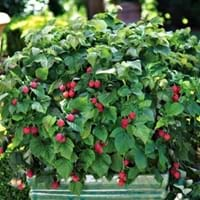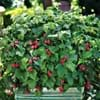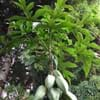Life Span
Perennial
Perennial
Origin
Not Available
Asia, Europe, North America
Types
not available
Black Ash, Blue Ash, California Ash, Carolina Ash, European Ash
Number of Varieties
Not Available
Habitat
disturbed sites, Forest edges, old gardens, Riverbanks, Roadsides
Forest edges, Hillside, Woods
USDA Hardiness Zone
4-9
3-9
Sunset Zone
A1, A2, A3, 1a, 1b, 2a, 2b, 3a, 3b, 4, 5, 6, 7, 8, 9, 10, 11, 12, 13, 14, 15, 16, 17, 18, 19, 20, 21, 22, 23, 24
9, 12, 13, 14, 15, 16, 17, 18, 19, 20, 21, 22, 23, 24
Habit
Upright/Erect
Oval or Rounded
Flower Color Modifier
Bicolor
Not Available
Fruit Color
Red
Not Available
Leaf Color in Spring
Green
Dark Green
Leaf Color in Summer
Green
Dark Green
Leaf Color in Fall
Green
Dark Green
Leaf Color in Winter
Light Green
Dark Green
Leaf Shape
Spade shaped
Oblovate
Plant Season
Spring, Summer, Fall
All year
Sunlight
Full Sun, Partial Sun
Full Sun, Part sun
Type of Soil
Loam, Sand
Loamy, Sandy
The pH of Soil
Acidic, Neutral
Acidic
Soil Drainage
Well drained
Well drained
Bloom Time
Spring, Summer
Late Spring, Spring
Tolerances
Drought
Drought, Pollution, Soil Compaction
Where to Plant?
Container, Ground, Pot
Ground
How to Plant?
Seedlings, Stem Planting, Transplanting
Grafting, Seedlings, Stem Planting, Transplanting
Plant Maintenance
Medium
Medium
Watering Requirements
Do Not over Water, Keep ground moist
Does not require lot of watering, Medium, Prefer drip-irrigation instead of Over-head watering
In Summer
Lots of watering
Lots of watering
In Spring
Moderate
Moderate
In Winter
Average Water
Average Water
Soil pH
Acidic, Neutral
Acidic
Soil Type
Loam, Sand
Loamy, Sandy
Soil Drainage Capacity
Well drained
Well drained
Sun Exposure
Full Sun, Partial Sun
Full Sun, Part sun
Pruning
Remove damaged leaves, Remove dead branches, Remove dead leaves
Prune in winter, Prune prior to new growth
Fertilizers
All-Purpose Liquid Fertilizer
All-Purpose Liquid Fertilizer
Pests and Diseases
Red blotch
Bark splits, Crown gall, Epicormic Sprouting, Woodpecker feeding
Plant Tolerance
Drought
Drought
Flowers
Insignificant
Yes
Flower Petal Number
Single
Single
Foliage Texture
Medium
Medium
Foliage Sheen
Matte
Glossy
Attracts
Butterflies
Birds
Allergy
Skin rash
Not Available
Aesthetic Uses
Showy Purposes
Not Available
Beauty Benefits
Good for skin
Not Available
Environmental Uses
Not Available
Air purification
Medicinal Uses
Sore throat, Ulcers, Wounds
Fever, Liver problems
Part of Plant Used
Fruits
Leaves, Stem
Other Uses
Edible syrup, Used As Food, Used as Ornamental plant
Used as Ornamental plant
Used As Indoor Plant
No
No
Used As Outdoor Plant
Yes
Yes
Garden Design
Edible, Fruit / Fruit Tree, Hedges
Shady Tree, Showy Tree
Botanical Name
RUBUS 'Amity'
Fraxinus
Common Name
Amity Raspberry, Raspberry
Ash Tree
In Hindi
Raspberry
राख पेड़
In French
Framboise
Frêne
In Spanish
Frambuesa
Fresno
In Greek
Βατόμουρο
δέντρο Ash
In Portuguese
Framboesa
Freixo
In Latin
RUBUS IDAEUS
Fraxinum
Phylum
Anthophyta
Anthophyta
Class
Eudicotyledones
Magnoliopsida
Clade
Not Available
Angiosperms, Asterids, Eudicots
Tribe
Not Available
Oleeae
Subfamily
Not Available
Not Available
Season and Care of Raspberry and Ash Tree
Season and care of Raspberry and Ash Tree is important to know. While considering everything about Raspberry and Ash Tree Care, growing season is an essential factor. Raspberry season is Spring, Summer and Fall and Ash Tree season is Spring, Summer and Fall. The type of soil for Raspberry is Loam, Sand and for Ash Tree is Loamy, Sandy while the PH of soil for Raspberry is Acidic, Neutral and for Ash Tree is Acidic.
Raspberry and Ash Tree Physical Information
Raspberry and Ash Tree physical information is very important for comparison. Raspberry height is 120.00 cm and width 120.00 cm whereas Ash Tree height is 75.00 cm and width 45.00 cm. The color specification of Raspberry and Ash Tree are as follows:
Raspberry flower color: White
Raspberry leaf color: Green
Ash Tree flower color: White
- Ash Tree leaf color: Dark Green
Care of Raspberry and Ash Tree
Care of Raspberry and Ash Tree include pruning, fertilizers, watering etc. Raspberry pruning is done Remove damaged leaves, Remove dead branches and Remove dead leaves and Ash Tree pruning is done Prune in winter and Prune prior to new growth. In summer Raspberry needs Lots of watering and in winter, it needs Average Water. Whereas, in summer Ash Tree needs Lots of watering and in winter, it needs Average Water.





